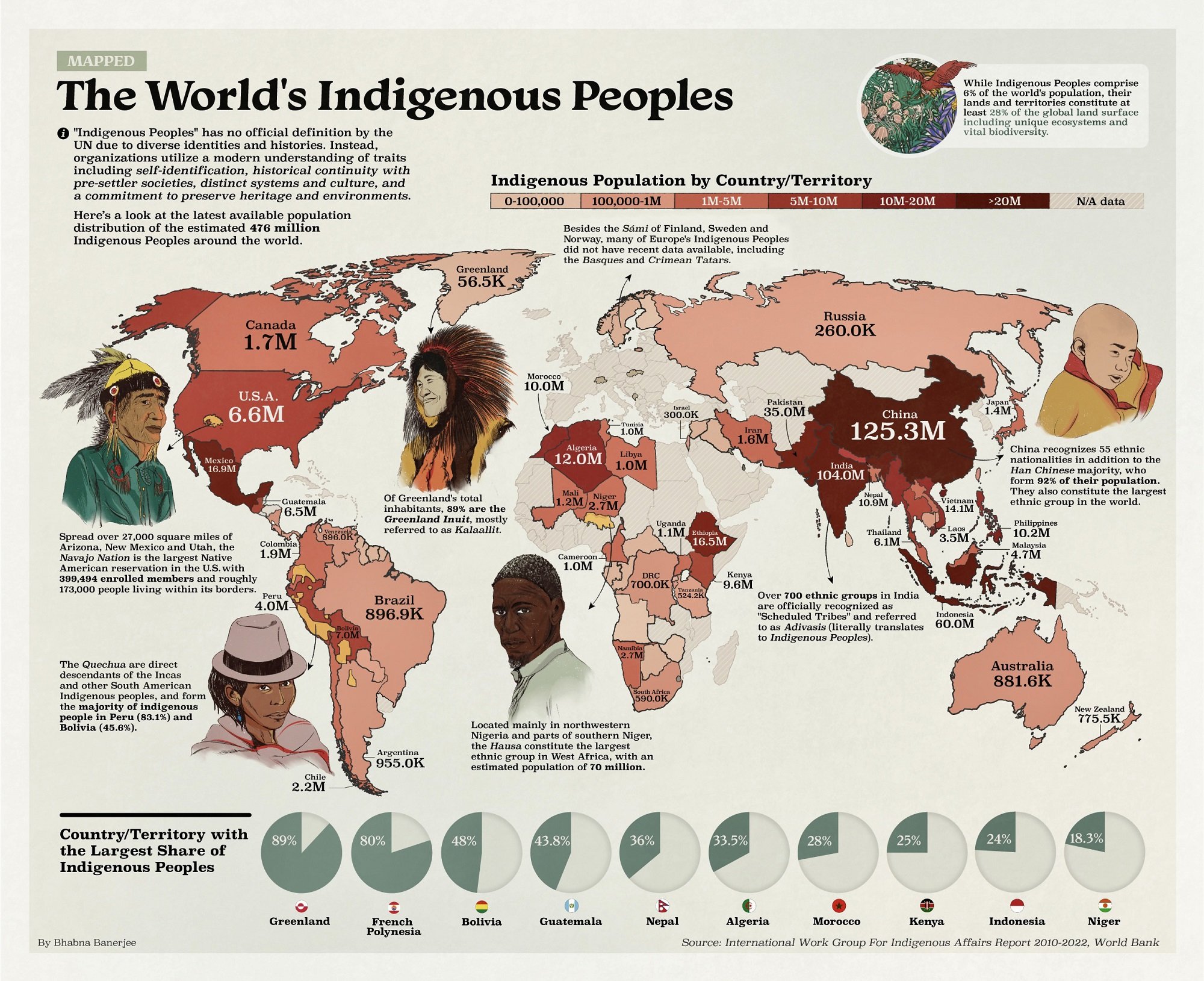Mapped: The World’s Indigenous Peoples
While indigenous peoples comprise 6% of the world's population, their lands and territories constitute at least 28% of the global land surface including unique ecosystems and vital biodiversity.
The World’s Indigenous Peoples
Humanity has spread to almost every corner of Earth, and while some peoples have continued to move, others have grown roots in one region.
Generally the term indigenous peoples refers to social or cultural groups with strong ancestral ties to their land of origin. Many times these are tied to ethnicity and still live in their land of origin, but some have been displaced, diluted, or become minorities in their lands.
This map by Bhabna Banerjee uses data from the Indigenous World 2022 report to show the population distribution of the roughly 476 million Indigenous peoples around the world. When 2022 data was unavailable, the latest available data was used.
What Are “Indigenous” Peoples?
Before diving in, it’s important to note that this map and report are based on the United Nations’ approach to indigenous peoples.
Due to the diversity and difficult history experienced by these groups, including countries that don’t recognize indigenous peoples in their lands, there is purposefully no official definition of “indigenous.”
Instead, the UN and other organizations working with indigenous peoples utilize an understanding based on self-determination that includes:
Self-identification as indigenous peoples at the individual level and accepted by the community.
Historical continuity with pre-colonial and/or pre-settler societies
Strong link to territories and surrounding resources
Distinct social, economic, or political systems
Distinct language, culture, and beliefs
Forms non-dominant groups of society
Resolve to maintain and reproduce their ancestral environments and systems
Because of this, ethnic groups that are indigenous (as a dictionary term) to their lands like the Han people in China, the Turks in Turkey, or the Scots in Scotland were not included in this report.
On the flip side, groups like Greenland’s Inuit were included, because of their long history of colonial control as well as Danish influence.
Indigenous Populations Worldwide
Of all the countries included in the report, China has the highest number of Indigenous, with an estimated population of 125.3 million.
It’s worth noting that the Chinese government does not officially acknowledge the existence of Indigenous peoples. However, they do recognize 55 different ethnic nationalities across the nation, including the Zhuang, Mongolians, and the Hui.
After China, India has the second largest Indigenous populations, with over 700 officially recognized ethnic groups. Many of these are concentrated in the north-eastern region of India, from Rajasthan to West Bengal.
While different countries and territories have varying numbers of Indigenous peoples, one thing remains consistent across the board—on average, the world’s Indigenous populations typically face greater economic and social challenges than their non-Indigenous counterparts.
Disadvantages Faced by Indigenous Peoples
Research by the UN’s International Labour Organization (ILO) found that, while Indigenous peoples make up only 6% of the world’s total population, they account for nearly 20% of the world’s extreme poor.
In addition, Indigenous peoples also have much lower average life expectancies than non-Indigenous people, according to a report by the United Nations.
Some countries and governments around the world are starting to implement laws and policies to support and recognize Indigenous communities, but there’s still work to be done.


